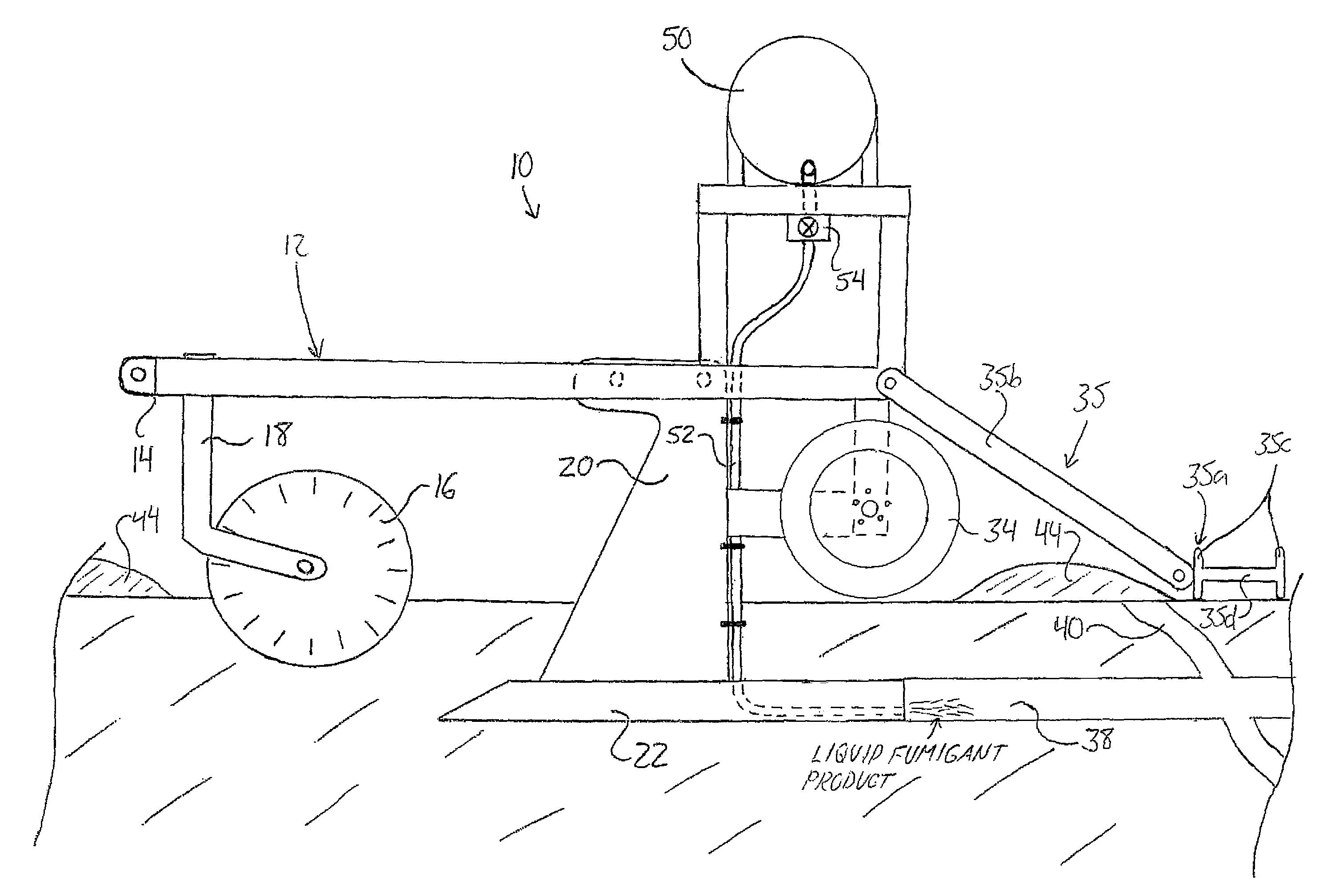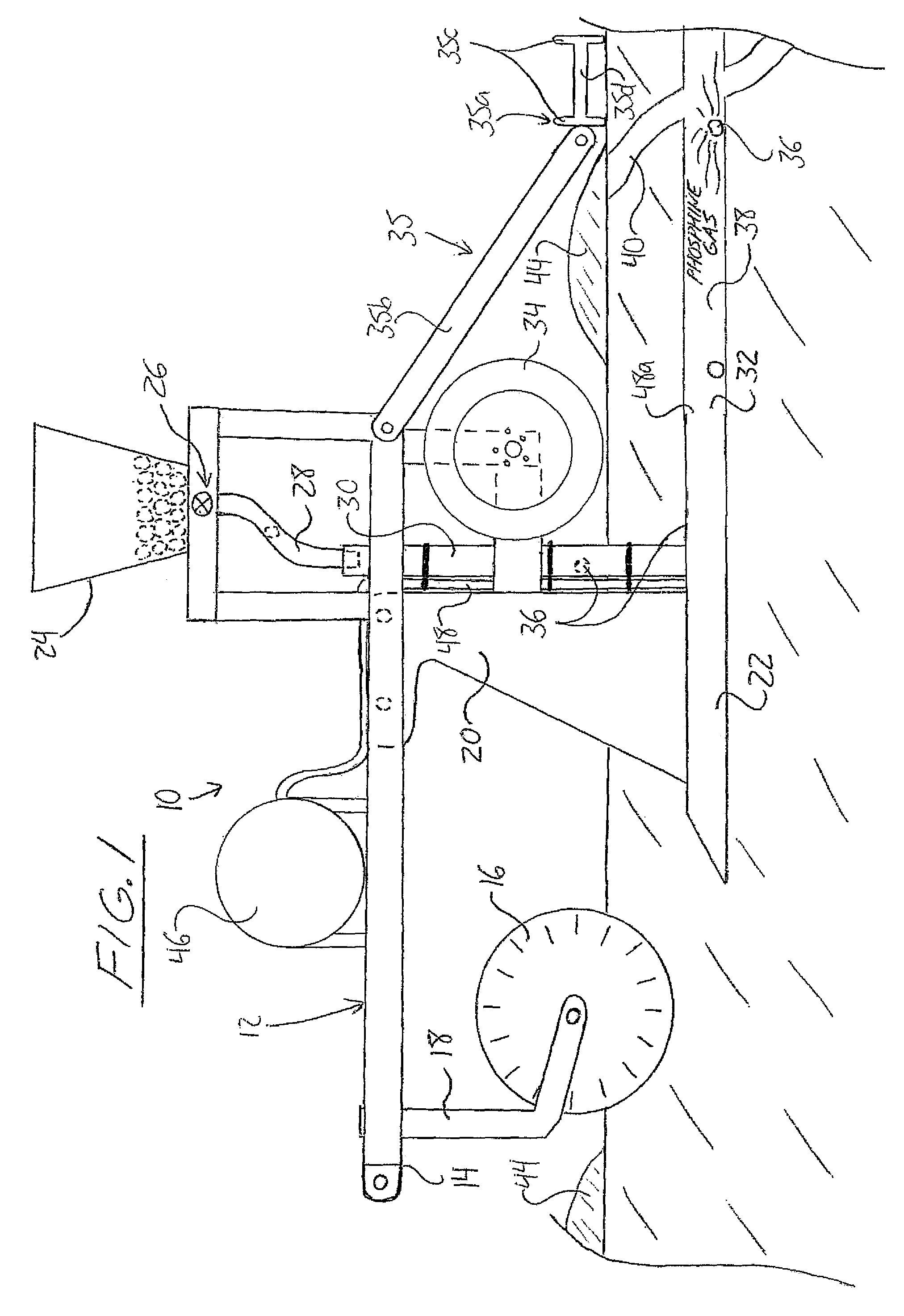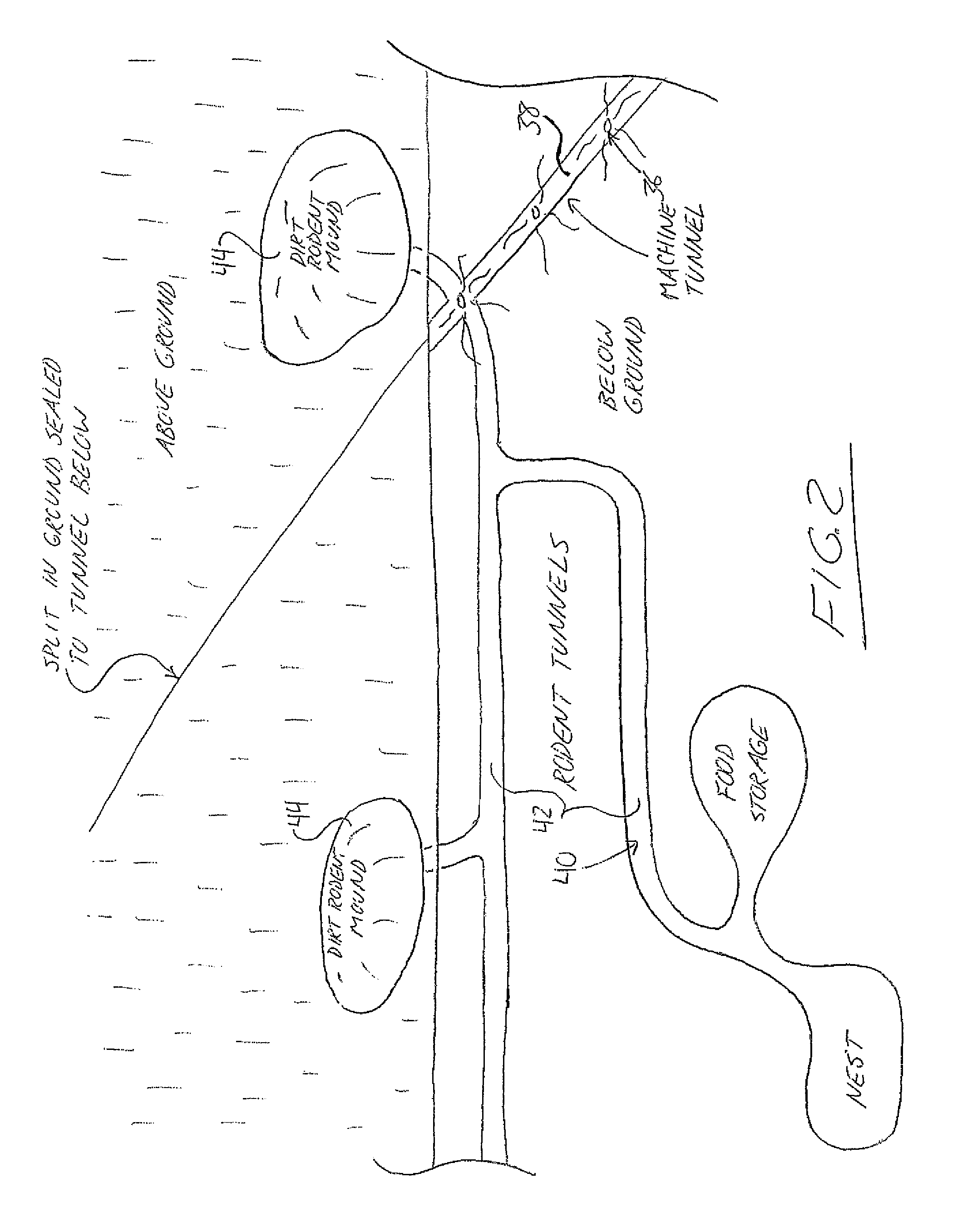Pest control for burrowing animals
a technology for burrowing animals and pests, applied in the field of pest control methods for burrowing rodents, can solve the problems of loss of crops, laborious all techniques that require manual location of burrows, and foregoing prior art techniques leave room for improvemen
- Summary
- Abstract
- Description
- Claims
- Application Information
AI Technical Summary
Benefits of technology
Problems solved by technology
Method used
Image
Examples
Embodiment Construction
[0040]A pest control process demonstrating one method of application of the present invention involves using a machine to make a slit in the ground and deposit aluminum phosphide tablets / pellets in the earth for the purpose of controlling rodents. Aluminum phosphide, and the resulting phosphine gas, is a commonly used fumigant in North America. It is registered in some jurisdictions for the control of various rodents, including the pocket gopher. Currently, placement of the aluminum phosphide tablets / pellets is done by locating the rodent's tunnel manually, and placing the aluminum phosphide into the tunnel by hand. The new process uses a machine to make an artificial slit or tunnel in the earth at the approximate depth of the rodent's burrow system. The aluminum phosphide product is metered into this slit, and the earth is sealed above the slit. The rodent's burrow system is intersected randomly by the machine made tunnel / slit. The aluminum phosphide releases phosphine gas over a p...
PUM
 Login to View More
Login to View More Abstract
Description
Claims
Application Information
 Login to View More
Login to View More - R&D
- Intellectual Property
- Life Sciences
- Materials
- Tech Scout
- Unparalleled Data Quality
- Higher Quality Content
- 60% Fewer Hallucinations
Browse by: Latest US Patents, China's latest patents, Technical Efficacy Thesaurus, Application Domain, Technology Topic, Popular Technical Reports.
© 2025 PatSnap. All rights reserved.Legal|Privacy policy|Modern Slavery Act Transparency Statement|Sitemap|About US| Contact US: help@patsnap.com



